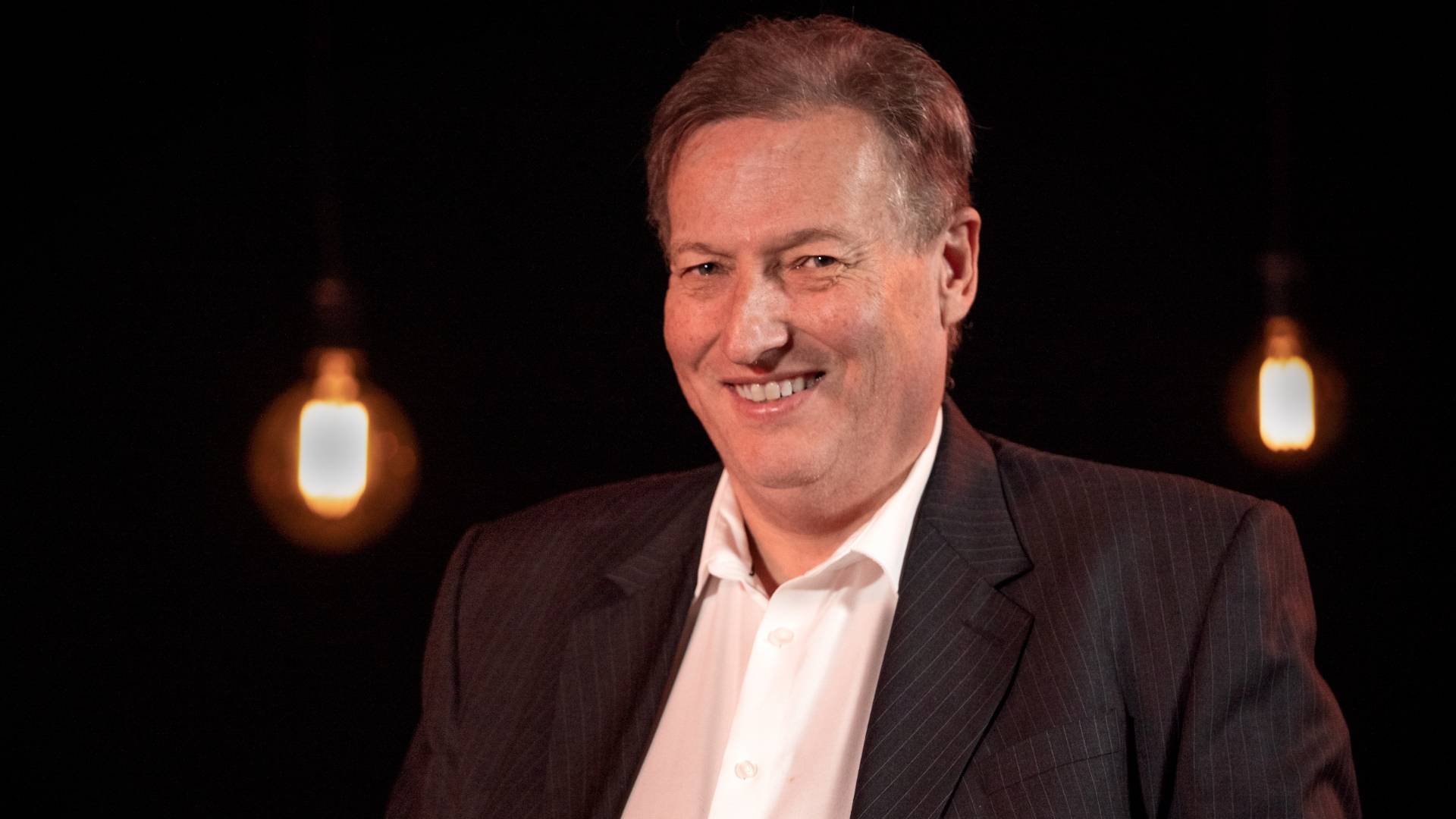Many people find investment speak confusing, an issue that has more to do with the language of investing than investing itself. In this interview, Chris Hart, Asset Manager and Executive Chairman at Impact Investing , asks some hard questions, sharing expert insights on investing – a field that is often tainted by industry jargon.
This Prosperity Session offers invaluable learnings for anyone interested in the truth about investing. We picked some of the best moments to shine a light on, and help simplify some of the complexities of investing.
VIDEO
Tell us about your background – your start in the financial services industry?
Chris Hart: I started in financial services with a very big career change, from being a science teacher to becoming a financial market economist. My first job was in the Absa Dealing Room – I was there for nine years. Then I received an offer to be the Chief Economist at Investment Solutions, which was a subsidiary of Alexander Forbes – one of the bigger asset managers; a multi-manager, in fact.
I was there to conduct economic research. However, instead of Absa Dealing Room’s short-time horizon, this is a much longer time horizon that you had to take at Forbes. The contrast for me was great.
There were a lot of assets under management – a few hundred billion. I was then appointed the Chief Strategist. I loved the career shift. It really was a great place to work. I think that this specific environment gave me a unique perspective, a helicopter view of the industry.
We would deal with the clients who are actually passing on the money. We also dealt with the asset managers in deciding where we would be placing money.
This experience helped me understand the industry, and what being a growth manager is all about. I realised that two different growth managers would have two very different portfolios; likewise, the same could be said of two value managers. Also, blending portfolios and how to actually change the overall outcome to be more consistent through a multi-manager approach. It was very scientific and intense, and I do believe Investment Solutions was the market leader in that.
What were some of the initial challenges you faced?
Chris Hart: Something we were frequently pressured with was people telling us we need to allocate a portion of the portfolio to sustainable, responsible investing. I was extremely prickly, because I said that we were investing pension money – all of it. We already had 100% invested sustainably and responsibly. So, what did they mean by “sustainable and responsible investing”?
It’s usually these ‘woke types’ that have got special interests. What they are actually describing is a charity. Now, I’m not opposed to charity, but it’s not the place for pension money. A retiree doesn’t get a second chance.
When a client gets to retirement, we can’t say that we did wonderful things with your money – we saved rhinos and hugged bunnies – but, terribly sorry about your retirement.
What were some of your key learnings at Impact Investing?
Chris Hart: What we were trying to do at Impact Investing was, firstly, to have the right front-end to be at least investible, so that you can determine value. Secondly, you’ve got to understand what that investment will do in the portfolio.
What will it do to the risk-return profile? Will it reduce the risk and increase returns? If you can’t answer that, and the investment does not compete with the other classes in terms of risk and reward, it has no place in the portfolio.
No matter what fabulous cause you are trying to promote. You can save the world with whatever you’re doing, but it has no place in the pension portfolio – certainly in the traditional sense. At Impact Investing, we had to be able to provide satisfactory answers to those questions.
Do you see traditional thinking and investment advice as a gatekeeper that denies investors that opportunity?
Chris Hart: Absolutely. Firstly, there are regulatory barriers that managers hide behind. I say “hide behind” because this is a space where nobody wants to stick their heads out. In other words, the tall trees catch the wind. You do not want to catch wind.
In the investment industry, benchmarks are so important. Now that sounds like it’s an objective way to measure returns, but it’s not. Benchmarks themselves are problematic. It is often what drives passive management. In the end, active management decision-making is what you have to do to be successful.
The industry is fraught with these contradictions because it’s so benchmark driven. Nobody wants to stick their head out and do something different. Everybody draws comparisons on what they’re doing. For instance, saying: “Oh dear, we’ve got too many Naspers shares in our portfolio; what are the others doing?” When they discover that the other guys also have too many Naspers shares in their portfolio, the conversation changes to: “Well, we can’t not have too many Naspers shares in our portfolio.”
So, because of the nature of the market, if you have one share lacking in your portfolio, you’re underperforming due to the dominance of the benchmark. Typically, that tends to be where we end up with very pedestrian performance.
Remember, the investor – the owner of the pension fund or unit trust – is paying for this lacklustre overall performance.
What are some other barriers to investing?
Chris Hart: Let’s get one thing straight. The minds employed by the industry are absolutely superb. They are the top minds in terms of the analysis that they have to do; as to whether you are rotating out of Anglo and buying BHP or selling Foschini.
Phenomenal intellectual capital goes into what ends up being quite an ordinary result. And that is the conundrum we face as an industry. Even from a generational point of view, young people can see the problems. My parents have saved all their lives for their pension fund, but it is not adequate. In the end, it has not met the need.
To understand the irony, you have to go back to the time of Pravin Gordhan, SA’s former Minister of Finance. He often used to beat this drum that we do not have a so-called savings culture. And I’d look at that and say: “Savings culture?” He’s talking about a culture of savings. In South Africa, we’ve got one of the deepest and strongest “cultures” of saving. When we go back to our pension industry, even back in the 1800s already, people knew that they had to save for their old age. Our pension industry is more developed than most in Europe.
I mean, what else is a “stokvel” other than an actual culture of saving? Therefore, when we say we don’t save enough despite that culture, why is it? The reason is quite simple: government policy has made saving unviable.
Our entire economic system favours the borrower over the saver. And that skews it already. Too often, we are corralled into this traditional model where the conventional wisdom of what risk and reward are, becomes distorted.
Are there any guarantees in investing that we can bank on?
Chris Hart: Let me give you an example. If an asset manager speaks about risk, there is only one risk. He might use words that describe other risks, but there’s only one risk that he’s actually talking about. And that’s volatility. Because you can calculate a number and draw fabulous graphs to support it. Then they will sell portfolios that are risky and portfolios that are safe – what does that even mean?
Ultimately, it’s because they are using volatility as a risk measure. But if we take another yardstick, like inflation, cash, which is considered the safest investment, now becomes the riskiest investment you can make. And yet, you are defaulted into cash as you reach retirement. But at retirement, the actual customer’s biggest risk is inflation. The industry is giving the wrong advice entirely.
In investing, there are no guarantees, except one – cash will be taken out on a stretcher by inflation.
Can alternative asset classes offer the retired investor a better opportunity?
Chris Hart: Yes, I actually do believe you have to break away from conventional wisdom. Only then can you go about getting a proper solution for yourself.
If someone retired on a fixed income at 60, by the time they’re 70, they are already cutting their medical aids – at a time they need it the most. Life has just become too unaffordable on the income that they retired on. Unfortunately, this is the tragedy of the whole thing.
We desperately need a new generation of financial advisors who are not necessarily connected to the so-called wisdom of the industry.
We need people who can ask the question: “What is the client’s real risk versus what the industry is pushing?”
How would you explain a pension fund to a layman?
Chris Hart: A pension fund is your money, that you worked for, that you put in a fund, from which rights have been taken away.
It’s the worst thing you can do with your money. It’s like buying a gift voucher. Here you’ve got money that doesn’t expire that you can spend anywhere or any way that you like, then you go and exchange it for a gift voucher that now expires – and you can only spend it in one way.
That’s exactly what a pension fund is like. It’s a system that’s trapping you with your own money at a time when you can do nothing to turn things around.
When it comes to pension funds, there must be better ways to invest. Conventional channels are not working, and yet there’s an enormous opportunity behind those conventional channels. We call it private equity or venture capital, but there are nuances even behind that.
Do you have advice for people who want to get involved in alternative investment types?
Chris Hart: Firstly, we need to appreciate that venture capital and private equity are quite underdeveloped in South Africa. The reason is that they are not listed. It’s not really a “trusted” channel of investment. Part of that is when you have a government that is so corrupt and pushing that corruption in almost all avenues of society. This erodes trust. And part of investor confidence is trust, so that people stick to what they know works. For example, a unit trust on the JSE.
In reality, there are more unit trusts than there are shares on the market. It’s just managers putting together different combinations in different ways, and then somebody says we can do it bigger, better, faster. Then the next person goes and does it that way. But as long as it sticks to the benchmark, then we’re okay. We’re talking basis points here – fractions of a percent that really end up making the difference.
There is certainly a need for investor education. But there’s also a need for exposing people to the alternatives available to them.
What are some non-traditional ways to invest in alternative investment options? Chris Hart: Sometimes, one has to look for structures. This can be complicated and expensive. But you can actually generate quite good returns if you work smart. For instance, if there is a tax structure or incentive that exists – use it. It’s there, embedded in the tax act, so why not use it?
That means, in many instances, one can say – what’s the risk? If you take your taxes and convert that into an investment, and it goes wrong, you are in no worse position than if you just paid your taxes.
If the taxman allows that incentive to last long enough, you can actually get an entire pension plan where, after eight or nine years of doing it consecutively, one year to the next, you can have a 100% replacement ratio for your salary.
How does this compare to traditional models of saving for retirement?
Chris Hart: Well, let’s take the general example of those individuals just doing a pension plan from their first salary. Forty years down the line, they might reach a 60% replacement ratio. And that’s after doing everything right with their pension.
If you have someone who has done nothing about their pension and they are suddenly worried, you can actually get a full 100% replacement ratio by the time they get to 65 using an alternative model like tax investing.
That’s the kind of revolution that takes place when you convert your taxes, because your taxes are very high. High investment, high yield as well. And then you get that compounding effect, which investment managers love to talk about. But when you’re compounding 1% a year… well, you’re not going to get much compounding even 20 years down the line. But if you’re compounding 12-15%, then you can see the power of compounding. Every five years, it doubles. That’s way in excess of inflation.
Speak to IFSA, a reliable alternative to mainstream investment channels
At IFSA Private Equity, we get it. Figuring out the best way to diversify your portfolio and invest your hard-earned money can feel incredibly overwhelming. Fortunately, this is an area where we can help.
With a proven track record and over 60 years of combined experience , IFSA is no stranger to walking the talk for our clients. In the end, it’s about choosing the right partners. Because the journey towards realising your investment goal is just as important as the goal itself.
Want to find out how we can help your portfolio prosper? Book a free consultation today.
IFSA (Pty) Ltd Registration No. 2000/005153/07 An Authorised Financial Services Provider Licence No. 43337




